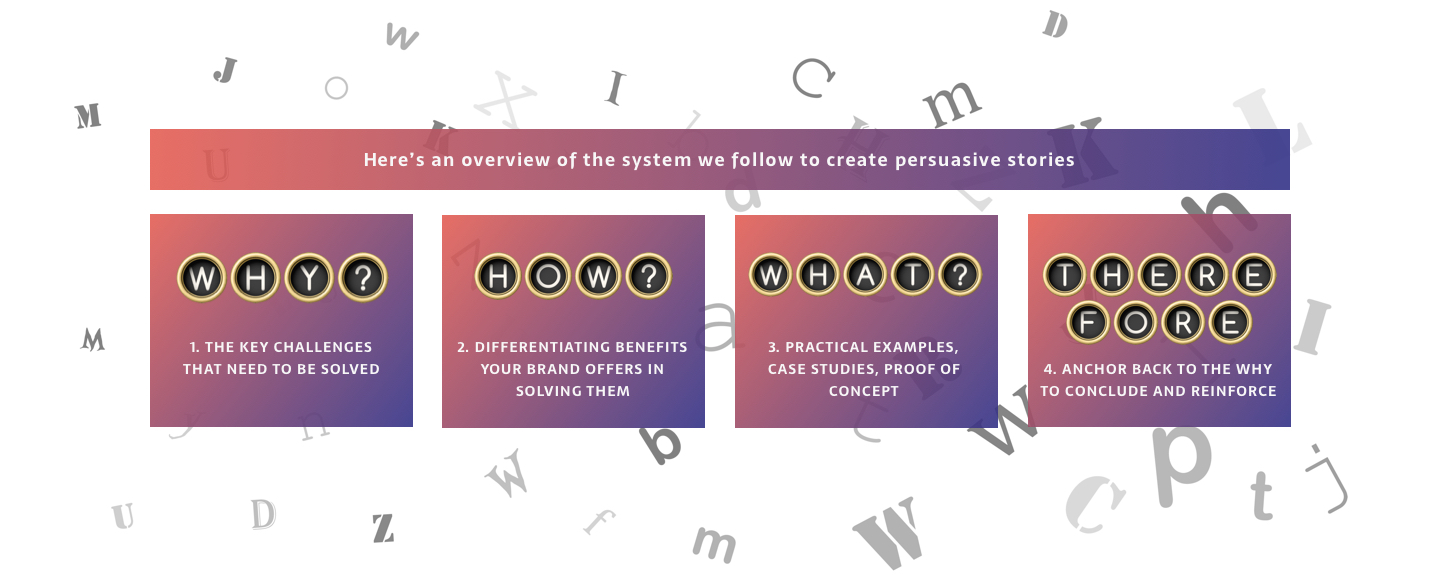The storytelling system behind good content marketing
Sit down and let me tell you a story. No, not the one about that lad with the oversized vegetables. Nor the one about a wonderful house made out of biscuit. Or even that one with the irritating talking snowman.
This one’s about how something that might seem more suited to the playground can actually help to make your marketing a lot more effective.
Predating many other forms of communication, storytelling was the most effective way for our ancestors to share important knowledge; those people who told the best stories were able to best share information such as where to hunt, what to eat or how to avoid a sabre toothed tiger. Building an affinity with these storytellers – listening to them and following them – was the smart way to survive.
Thousands of years later we’re still predisposed to a good story. The techniques may have been used across other media such as music, books and movies but the essence remains the same – we find a strong narrative compelling. It can move us on an emotional level.
That applies to brands and marketing communications, even in the apparently dry world of B2B. It’s still humans selling to humans after all. At least for the time being. So it’s critical to consider not only the rational, technical relevancy of what you’re communicating but also the emotional engagement you can offer to best promote why someone should prefer your product over the myriad competitors.
We use storytelling as a central part in achieving this. Whilst developing the good ideas might be the hard part, the formula to follow in producing a compelling story is actually pretty straightforward. The fundamental trick here is to ensure you’re focusing on the “why” – the benefits the reader is to gain from the story beyond the nuts and bolts of how that benefit might be achieved.
Perhaps the most famous contemporary proponent of this technique is Simon Synek. Yes, we know it’s been co-opted by hordes of LinkedIn “experts” but his book, Start With Why, remains an important read on the topic of storytelling. Synek argues that strong, innate motivations such as achieving a sense of belonging and building social status drive our decision making on a sub-rational “gut feel” level, and that this can inform or even override our rational brain function. Putting a strong sense of purpose – the why – into your storytelling is the most effective way to appeal to this emotional aspect of human nature.
So whilst it might be tempting, and indeed easier, to try and sell Acme typewriters on the speed of their keys or their durable construction, telling stories about the fantastic literary works written on Acme machines is going to be a much more persuasive argument.
With your audience already buying into the emotional benefits they stand to gain from your products or services, they’ll be more interested in learning about the mechanics of how you achieve those benefits. Maybe Ernest Hemingway’s Acme got trodden on by an irate bull, but he was still able to reel off A Farewell to Arms the next day thanks to your sterling manufacturing techniques.
In terms of marketing benefits, people are then going to be more inclined to offer their contact data as a marketing lead, and more inclined to either enquire or entertain a sales call at the right time. It’s an approach that has worked really well for our clients, including Mammoet. Their Global PR Manager, David Shaw:
“A lot of companies become so wrapped up in what they do day-to-day that they mistake a feature for a benefit. This is understandable, and more often than not comes from a genuine passion for their work, but it always produces introspective text with no emotional impact.
“What facts could describe your products? What do those facts do for people? Once you start listing things you can feel, you’ve found your benefits.”
To leverage these emotional benefits, Mammoet uses a storytelling structure based on the “Why” concept – ensuring where possible that narratives flow from Why, to How, to What and tie up with a conclusion reinforcing the Why.
This fundamental format is one that can be adapted easily and applied to any sort of marketing content. Case studies should be shaped in a Why-How-What format to most effectively package important technical information in a way that best promotes brand differentiation. Social posts should focus on the core “why” of what you’re promoting in a few short lines – save the explanation for after the “read more” button or a link. Longform content such as white papers require an investment of time to read that’s increasingly unusual for the modern, click-happy human, so framing the discussion around its core benefits is the most effective way to get people engaged and willing to read on.
It even comes in useful when you’re writing thought leadership content for a marketing agency…


